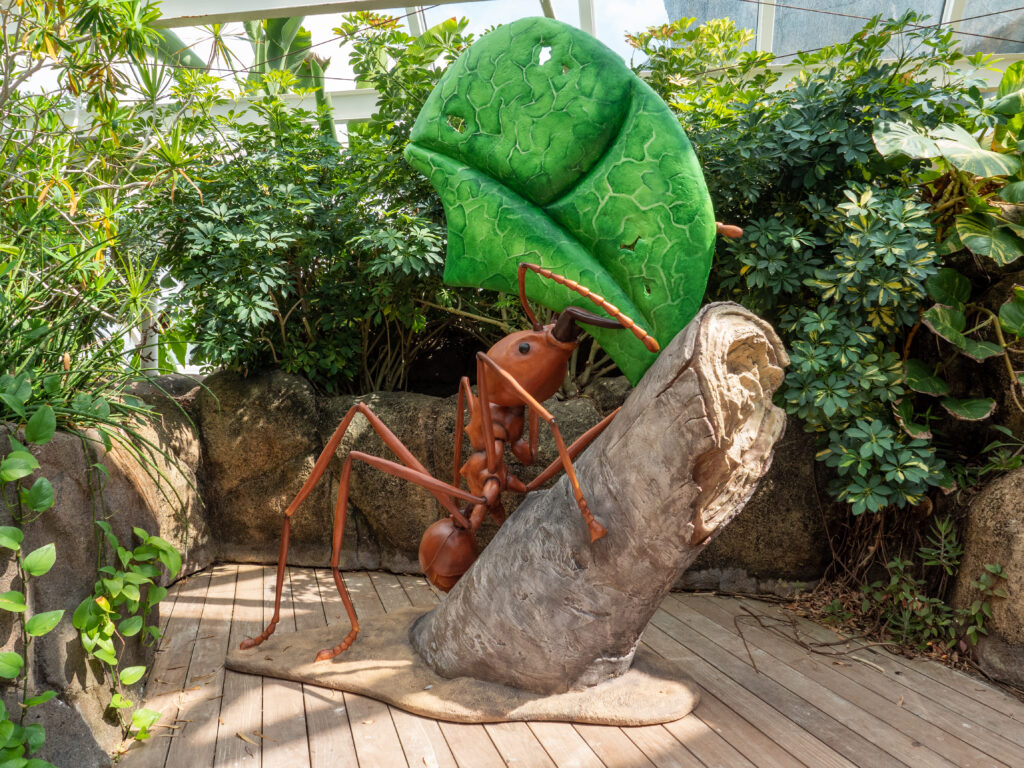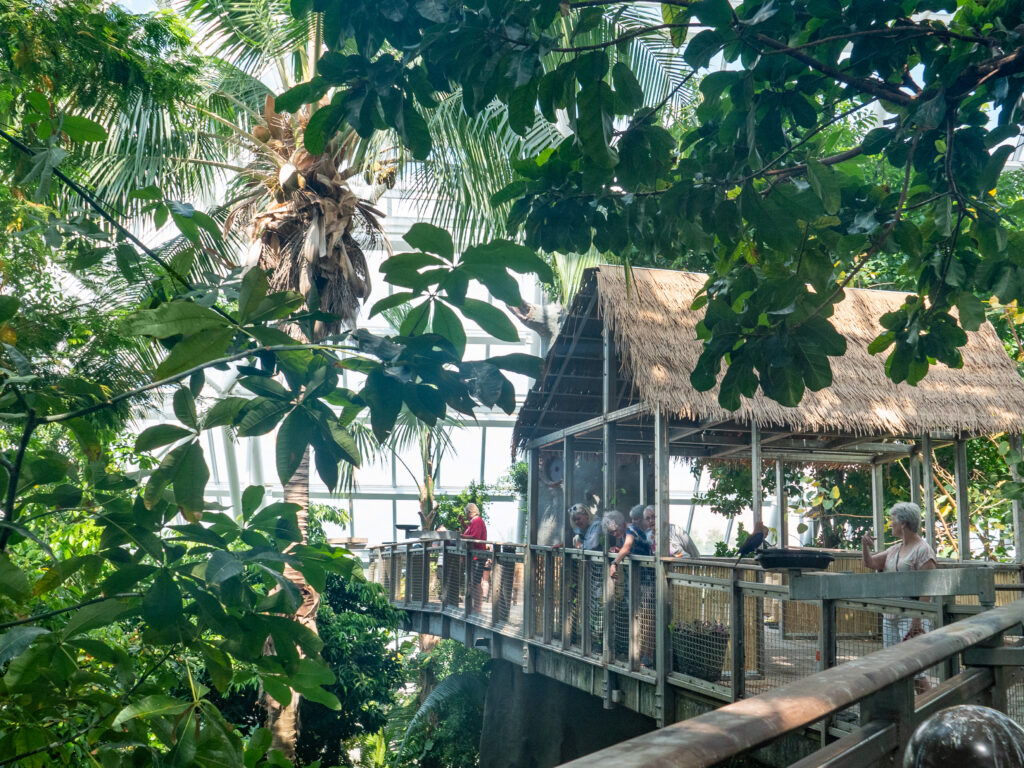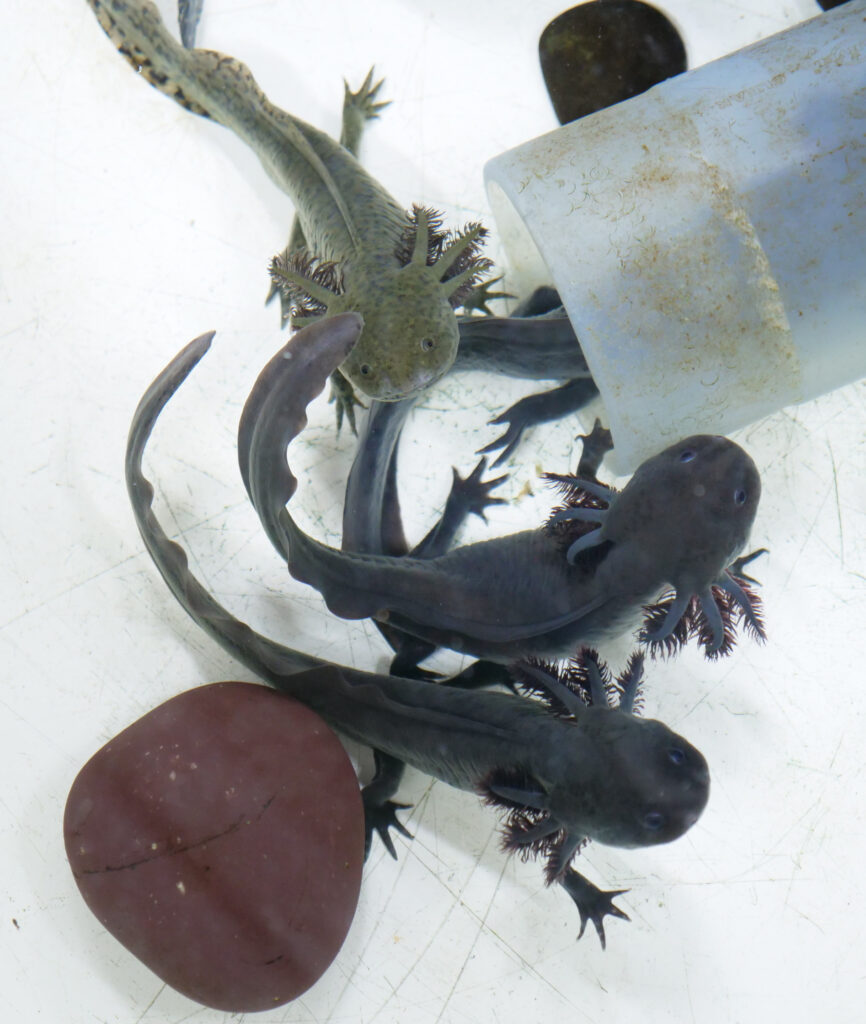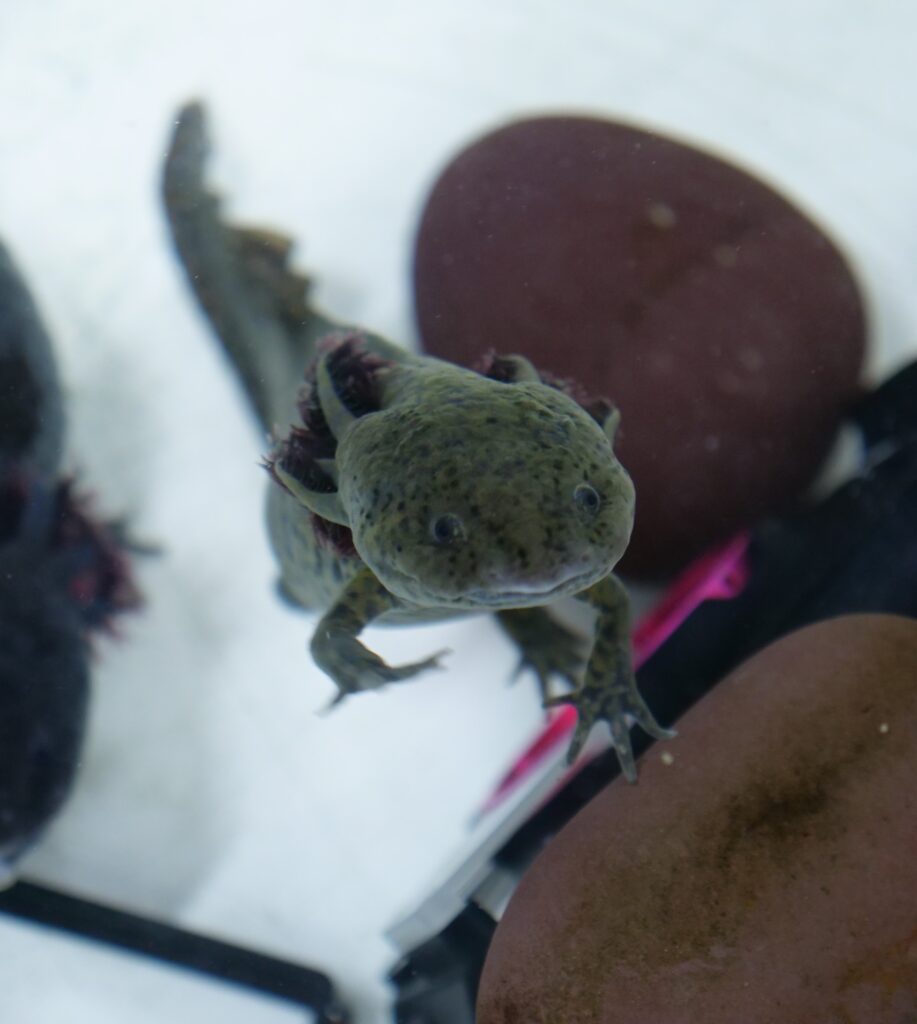
RAINFORESTS OF THE WORLD: DYNAMIC DWELLERS Debuts May 28th at Moody Gardens
An Active Bee Colony, Leaf Cutter Ants, Conservation Huts included in the enhancements
As a breathtaking tribute to the world’s vanishing rainforest, enhancements at the Moody Gardens Rainforest Pyramid will allow guests to learn how small creatures are doing big things for the environment as Rainforest of The World: Dynamic Dwellers opens on May 28.

Visitors can journey from the treetops to explore what occurs beneath the surface of the Rainforest Floor. New threatened, endangered and beneficial insects, invertebrates and interactive opportunities throughout focus on the critical roles these creatures serve in nature and our everyday lives.
A new and active European Bee Colony for an up close perspective and understanding of how these highly evolved families function together. Further exploration will take guests through the Upper Canopy and interactive experiences with binoculars and Field Notebooks at the Conservation Huts and beyond.
Stops along the way will lead to the fungus-farming Leafcutter Ant Colony, Decomposer Insects and organisms that serve as nature’s forensic scientists and freshwater tanks that feature small aquatic heroes and a Sunrise Gallery with 21 new invertebrate exhibits. These new inhabitants and more are accompanied by new breathtaking plants throughout representing the rainforests of Asia, Africa and the Americas.

“The Rainforest Pyramid is one of the most unique facilities in the U.S. as it educates and connects people with plant and animal life we don’t typically get to see,” said Paula Kolvig, Curator of the Moody Gardens Rainforest Pyramid which opened in 1993 and houses more than 1,700 exotic plants, a tree-top canopy entrance, free-flighted birds, roaming Saki monkeys and Cotton-top tamarins and a wide range of exhibits from an ocelot and freshwater fish to Kmodo dragons and other large and small reptiles.
Small Creatures, Big Stories:
European Honey Bee Colony

Habitat loss, pesticides, climate change and disease have critically impacted the status of honey bees. In the past 20 years, the American honeybee has completely disappeared from eight states. If they lose their home, they cannot pollinate – a process essential to the survival of plants, animals, humans and our entire ecosystem. The bees in this colony have indoor and outdoor access through a two-foot tube leading outside that allows the bees to roam freely.
Leafcutter Ant Colony
Witness Leafcutter ants work together as fungus farmers. They bite off leaves that are 50 times their weight and carry it from the treetops down to underground nests. They mash up the vegetation to feed and grow fungus that feeds their young while it promotes new plant growth for a thriving rainforest. Scientific advancements in pharmaceuticals and clean energy alternatives are linked to these small and mighty movers.

The Decomposers
The addition of Decomposers introduces a variety of organisms such as invertebrates, fungi, and bacteria that break down dead and decaying materials serving as Earth’s cleanup crew. The Dermestid Beetle is one of the most interesting and efficient as its larvae feed on flesh from bodies and can clean a carcass down to the bones.

Protect Waterways and Awesome Amphibians
- Axolotl Exhibit: Known as the Mexican Walking Stick, these tiny, fun-faced amphibians are critically endangered in the wild due to human development, wastewater disposal and loss of habitat from drought. Regenerating limbs up to five times in only a few weeks, they are studied by researchers to discover how humans may be able to heal more completely from disease and injury and for their unique resistance to developing cancerous tissues.
- Lake Titicaca Frog: Native to the basin in the Andes Mountains of Peru, this is the world’s largest aquatic frog. This carnivorous creature eats amphipods, snails, insects, fish and worms. It is a critically endangered species with its numbers falling by more than 80 percent in less than two decades due to over-harvest for human consumption for supposed medical benefits; habitat destruction; and introduction of predacious invasive species.
- Project Piaba Tank: The fish within this tank serve as ambassadors for an important conservation initiative/ The goal is to foster an environmentally and socially beneficial fish trade for the Rio Negro tributary of the Amazon River. Project Piaba promotes and researches sustainable aquarium pet fish collection and its impact on the environment while sustaining locals with jobs and money as it protects land and resources.

“The enhancements at the Rainforest Pyramid further advance the Moody Gardens mission of education and conservation,” said John Zendt, president and CEO of Moody Gardens, who added it will improve the guest experience. “Interactive experiences will engage the guests with opportunities to learn how to make personal choices that can invoke change to help preserve our natural resources.”
For more information about Moody Gardens call 409-744-4673 or visit www.moodygardens.org.
Moody Gardens® is a public, non-profit educational destination utilizing nature in the advancement of rehabilitation, conservation, recreation, and research.
Pictures courtesy of Moody Gardens